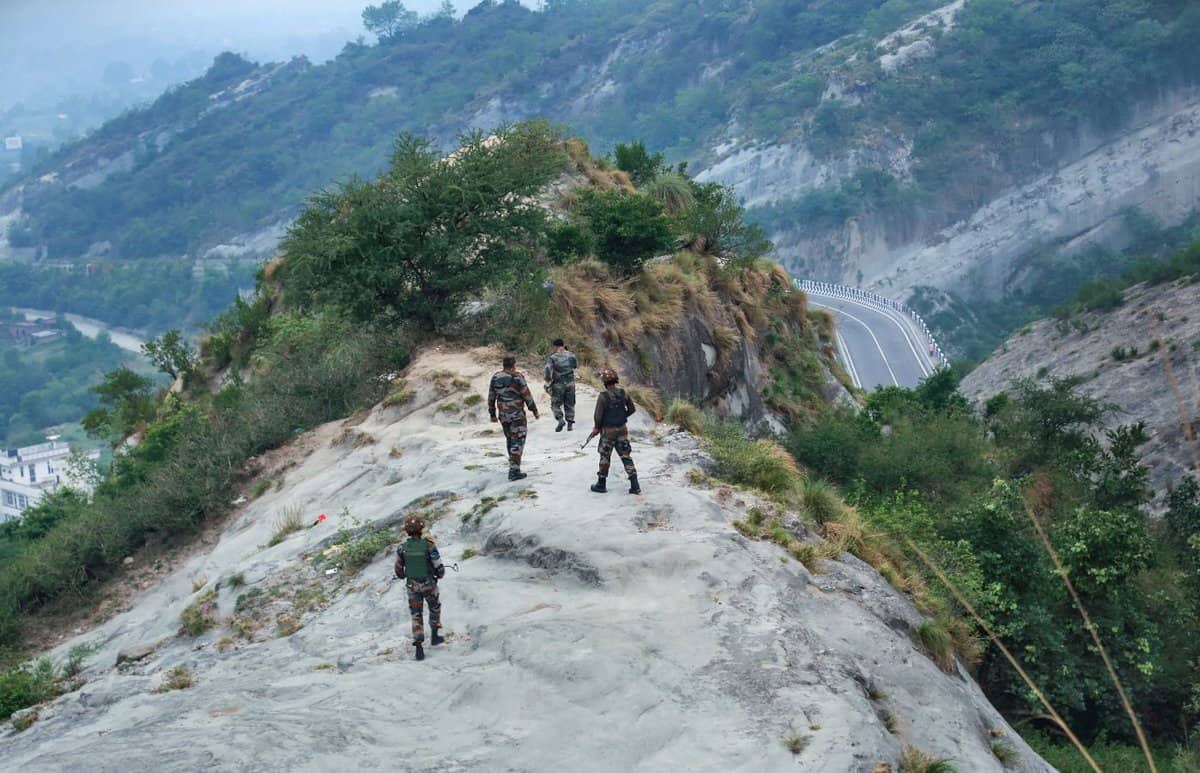

Amarnath yatra – an annual Hindu pilgrimage that culminates at a cave shrine devoted to Lord Shiva in Himalayas in Kashmir – is being held this year after a never-before witnessed gap of almost three years in decades. That’s attributable to amplified security concerns in August 2019, days after the success of the pilgrimage counted in statistics that more than three lakh pilgrims had “darshan of naturally made ice stalagmite, representing iconic shape of Lord Shiva at the height of 13,500 feet above sea level, surrounded by snowcapped mountainous peaks. It was directly linked to the abrogation of Article 370 but that was not uttered before halting the yatra in its tracks. The pandemic of Covid-19 forced the authorities to cancel yatra at the last minute. That’s not news.
The news is unprecedented security cover for the pilgrimage scheduled to commence on June 30. This kind of security cover, with every lane, by lane and streets covered and patrolled by security personnel. The army holding its own drills, and the paramilitary forces deployed virtually at every inch of 400-km route of the pilgrimage from Lakhanpur, the gateway of Jammu and Kashmir, to the cave shrine. The security network has been scaled up to this level where uniformed men and women are visible all over because of the reports that Pakistan or its sponsored terrorists might strike at the yatra. So, the government had to put in place to pre-empt all such designs believed to have been hatched by Pakistan. The safety of the Hindu pilgrimage in Kashmir is a matter of prestige for the government. The reason is simple; any harm to the pilgrims or disruption of the pilgrimage due to acts of terror can dent the nation’s image and dent its own narrative that normalcy has dawned in Kashmir. There also is a related issue that if the tourists are safe in the Valley, more than 11 lakh have visited till date, why should pilgrims face any threat. There are internal dynamics, that only the intelligence agencies, government and the people can understand. Tourists contribute to the local economy and also help Valley enhance its image as a safe destination. Tourists rom freely and fearlessly. Even when the targeted killings were on in Kashmir in May-June, tourists had nothing to fear. The assurances of their safety did not come from the Kashmiris associated with tourism and its allied industries, handicrafts, dry fruit, transport, hospitality sector, but more from the atmospherics. The tourists were moving around in an atmosphere that made them feel as if the killings were happening on a different planet. This was the psychological distance between the communities that felt scared after the spate of targeted killings, which started with the gunning down of Rahul Bhat, a Kashmiri Pandit employee, who was among those recruited from his community as part of the government’s plans under Prime Minister’s Rehabilitation ad Employment package, serving in the Valley. The Kashmiri pandit migrants were offered this special employment scheme to encourage them to return to the Valley that they had fled in 1990s under the fear of terror catching them and disrupting their life span and lives. That triggered fears.
Amarnath yatra has been a symbol of communal harmony in Kashmir- the local Muslims used to receive the yatra and would become part and parcel in arranging facilities for the pilgrims. The community’s participation lessened over the years as the government would prefer its own arrangements. But nevertheless, the majority Muslim community remained a crucial support system for the pilgrimage. That also was the biggest guarantee of safety of the pilgrims when terrorism was at its peak.

